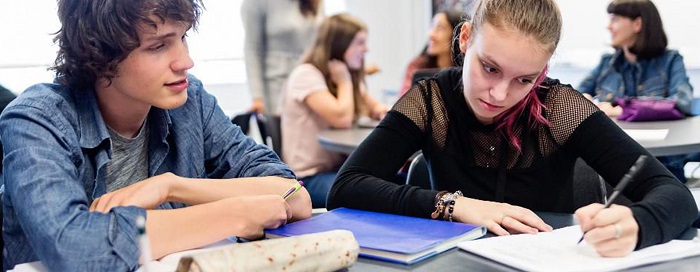That we live in the information age there is no longer any doubt. We have immediate access to all kinds of information, data and people through multiple devices and sources. That is why today it is more necessary than ever to have critical and reflective thinking. For what? It’s simple. Critical thinking helps us and the little ones to discern between what is true and what is false, what is important and what is superficial, evidence and opinions. It allows us to become aware of our thoughts to analyze and evaluate them effectively. And while it is true that all people have the ability to think, this is a skill that can and should be learned. In the same way, we learn to write, dance or sing.
How to develop critical thinking?
We give you 8 tips to develop critical thinking with the youngest, in or outside the classroom:
Reserve time and space
In our day-to-day life, busy with multiple tasks at once for most of the time, it’s hard to find a time when the mind focuses on just one thing: thinking. Establishing time of day to think reflectively, being aware of what is going through the mind, is important to create a habit and gain practice.
Promote knowledge and curiosity
Encourage young people to make new discoveries, in their closest environment or on abstract ideas. You can propose activities that incite curiosity and knowledge, always appropriate to their age. In this way, you will establish a gateway to new learning and thoughts.
It teaches to doubt
Without intending to generate distrust to the youngest, it is important that you ask them about the reliability of the sources they consult and the veracity of the information they receive so that they themselves learn to differentiate between what is well-founded and what is not, between complete and incomplete knowledge, and can thus make elaborate judgments.
Question
It is essential to promote critical thinking: what do you think? how do you know? why? It is also convenient that you share with them your way of thinking, your doubts and your point of view on the aspects that you think are convenient. There is no better teaching than setting an example.
Justify, argue, analyze
Find reasons, explain arguments, compare ideas in an orderly way with your children or students and ask them to do the same. Expressing thoughts they will become aware of the maturity and degree of elaboration of the same. An interesting activity is to propose that each one defends a position opposite to their own and with which they do not feel identified. For this, you can analyze texts, books, talks, advertisements, news, statements, etc.
Promote autonomy
Respect their space and propose readings, conversations, environments and activities that promote the development of critical thinking autonomously. In this way, your students will learn to think and express their opinions responsibly. To share their thoughts, it is important to respect the form of expression in which they feel most comfortable: some prefer to explain themselves in a group and oral way, while others prefer to do it in a more intimate format, in writing or in small groups.
Extend looks
Explain to your student’s other perspectives and other angles from which reality can be focused. We are part of a normally well defined social, political and cultural environment and our point of view is always conditioned by it. Therefore, trying to put yourself in the place of others to understand their point of view is a highly recommended training and creative activity.
Go deeper
In the exercise of promoting critical thinking, it is important to get to the bottom of some topics that are being worked on. Rather than asking for quick reflections on various issues, it is interesting to choose a few to analyze at a higher degree of depth.





